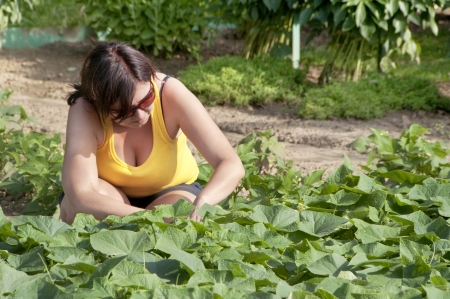Introduction to Sustainable Gardening in the UK
Sustainable gardening has become increasingly popular across the United Kingdom, reflecting a growing awareness of environmental stewardship and community well-being. In the British context, this approach not only addresses the unique challenges posed by our variable climate but also aligns with longstanding cultural values of resourcefulness and neighbourly cooperation. By adopting eco-friendly gardening practices—such as composting, water conservation, and organic soil management—gardeners can create resilient green spaces that support local biodiversity while reducing their ecological footprint. Furthermore, sustainable gardens in the UK often serve as communal hubs, fostering connections between neighbours and encouraging collective action towards a greener future. This introduction lays the groundwork for exploring how raised bed solutions can be tailored to suit both British homes and the broader goals of ecological responsibility.
2. The Benefits of Raised Beds for Eco-Friendly Gardening
Raised beds have become a cornerstone of sustainable gardening across the UK, offering numerous ecological and practical benefits for British households. Not only do they foster healthier plants, but they also contribute significantly to environmental conservation by optimising resources and minimising negative impacts.
Improved Soil Health
One of the chief advantages of raised beds is the ability to control and enhance soil quality. In many parts of the UK, native soils can be heavy clay or sandy, limiting plant growth and biodiversity. Raised beds allow gardeners to introduce nutrient-rich compost and organic matter, encouraging robust root development and supporting beneficial microorganisms. This improved soil structure leads to higher yields and reduces the need for chemical fertilisers.
Efficient Water Usage
Water conservation is a growing concern in British gardens due to changing climate patterns and periodic droughts. Raised beds help manage water use more effectively by promoting better drainage while retaining necessary moisture for plant roots. Gardeners can target watering directly at the base of plants, reducing wastage through runoff or evaporation. The table below highlights key differences between traditional ground-level gardening and raised bed systems in terms of water efficiency:
| Traditional Beds | Raised Beds | |
|---|---|---|
| Water Retention | Inconsistent; prone to runoff | Optimised; retains moisture at root level |
| Irrigation Efficiency | Higher wastage | Targeted application, less waste |
| Drought Resilience | Variable; often poor | Improved resilience with mulching options |
Reduced Environmental Impact in UK Households
By adopting raised bed gardening, British homeowners can dramatically lower their environmental footprint. Raised beds require less frequent tilling, which helps preserve natural soil structure and reduce carbon emissions from mechanical equipment. Additionally, raised beds make it easier to implement crop rotation and companion planting—both proven methods for natural pest management and maintaining soil fertility without synthetic chemicals.
Sustainable Materials & Local Adaptation
The use of reclaimed timber or recycled materials for constructing raised beds aligns with eco-friendly practices common in the UK. This approach not only reduces waste but also fits seamlessly into garden aesthetics, supporting wildlife habitats and pollinator corridors that are vital for local ecosystems.
Summary Table: Key Benefits of Raised Beds in Sustainable British Gardening
| Benefit Area | Description |
|---|---|
| Soil Health | Enhanced with tailored amendments; supports biodiversity |
| Water Efficiency | Minimises waste; improves resilience to droughts common in UK summers |
| Pest & Weed Control | Easier management with barriers and dense planting techniques |
| Sustainable Construction | Encourages use of local or recycled materials; reduces landfill impact |
| Biodiversity Support | Facilitates pollinator-friendly planting schemes essential for UK wildlife |
By leveraging these benefits, raised bed solutions empower British households to cultivate gardens that are both productive and environmentally responsible, setting a benchmark for sustainable living throughout the country.
![]()
3. Selecting Sustainable Materials for Raised Beds
When it comes to eco-friendly raised bed solutions for British homes, the choice of materials is a crucial factor that directly impacts sustainability and environmental footprint. Home gardeners are increasingly opting for materials that are both durable and responsibly sourced, aligning with the UKs strong commitment to environmental stewardship.
Reclaimed Timber: Tradition Meets Sustainability
Reclaimed timber is a popular option across the UK, combining rustic charm with a reduced environmental impact. Sourcing wood from old barns, decommissioned railway sleepers, or other structures helps conserve forests and reduces landfill waste. When choosing reclaimed timber, ensure it is free from toxic treatments such as creosote or arsenic, which can leach into the soil. British suppliers like The Reclaimed Timber Company and Ashwells Timber offer certified sustainable options suitable for garden use.
Recycled Plastic: Low Maintenance and Long-Lasting
Recycled plastic boards have gained traction due to their longevity and resistance to rot, making them ideal for the damp British climate. Manufactured from post-consumer waste such as milk bottles and food packaging, these boards divert plastics from landfill while providing a product that requires minimal upkeep. Notably, companies like British Recycled Plastic supply raised bed kits specifically designed for UK gardens, ensuring products meet local standards and weather conditions.
Local Stone: Natural Aesthetics and Reduced Carbon Footprint
For those seeking a timeless look, locally sourced stone offers both durability and minimal transportation emissions. Using stone from regional quarries supports local economies and ensures your raised beds blend seamlessly with traditional British garden styles. Suppliers such as CED Stone Group and Marshalls provide a range of ethically sourced British stone suitable for various landscape designs.
Considerations When Choosing Materials
Regardless of your chosen material, always verify supplier certifications for sustainability—look for FSC (Forest Stewardship Council) approval on wood products or recycled content verifications on plastics. Assess the life cycle impact of each material in terms of maintenance requirements, potential toxicity, and end-of-life disposal to ensure your gardening practices remain truly sustainable.
4. Water Conservation Strategies for British Gardens
Adopting water conservation practices is essential for sustainable gardening, especially within the unique climate variations found across the UK. Raised bed solutions, when combined with thoughtful water management, not only reduce environmental impact but also help maintain healthy, productive gardens. This section explores best practices for rainwater harvesting, mulching, and selecting drought-tolerant plants tailored to British weather conditions.
Rainwater Harvesting: A Practical Approach
Collecting rainwater is an effective way to reduce dependence on mains water and lower your garden’s environmental footprint. In the UK, where rainfall can be abundant in some regions and scarce in others, capturing and storing rainwater ensures a consistent supply for raised beds during drier periods.
Key Steps for Rainwater Harvesting
| Step | Description | UK-Specific Tip |
|---|---|---|
| Install Water Butts | Connect water butts to downpipes from roofs or sheds to collect runoff. | Choose larger-capacity butts in wetter regions like Scotland or Wales. |
| Add Filtration Systems | Use simple mesh filters to prevent debris entering your storage. | Regularly check filters during autumn leaf fall. |
| Utilise Collected Water | Irrigate raised beds using watering cans or drip systems fed by stored rainwater. | Schedule watering early morning or late evening to minimise evaporation. |
Mulching: Retaining Moisture and Improving Soil Health
Mulching involves covering soil with organic or inorganic materials to lock in moisture, suppress weeds, and regulate soil temperature—crucial in both rainy and drought-prone parts of the UK. Organic mulches such as bark chips, compost, or straw break down over time, enriching the soil and supporting beneficial microorganisms.
Mulching Best Practices
- Apply mulch in spring: When soil is moist and warming up, this maximises retention before dry spells begin.
- Layer thickness: Aim for 5–8 cm of mulch to create an effective barrier without suffocating plant roots.
- Avoid stems: Keep mulch a few centimetres away from plant stems to prevent rot and pest issues.
- Sustainability tip: Use locally sourced materials such as well-rotted manure or leaf mould whenever possible.
Drought-Tolerant Plant Choices for Varying UK Conditions
The unpredictability of British weather makes it wise to incorporate drought-resistant plants into raised beds. These species are resilient during dry spells yet thrive when rainfall returns, reducing the need for supplemental irrigation. Consider native or well-adapted varieties that support local biodiversity and pollinators.
Drought-Tolerant Plants Suitable for UK Gardens
| Plant Name | Main Features | Best Regions/Conditions |
|---|---|---|
| Lavandula angustifolia (English Lavender) | Aromatic foliage; attracts bees; low water requirements. | Well-drained soils; sunny locations across southern England. |
| Erysimum ‘Bowles’s Mauve’ (Perennial Wallflower) | Long-flowering; tolerates poor soils; minimal watering needed once established. | Mild coastal climates; urban gardens with free-draining raised beds. |
| Sedum spectabile (Ice Plant) | Drought-resistant succulent; excellent for pollinators; thrives in dry conditions. | Nationwide; ideal for sandy or gravelly soils in raised beds. |
| Tough perennial; supports wildlife; copes with dry summers. | Northern and eastern UK; exposed sites prone to wind and sun.
By integrating these water conservation strategies—rainwater harvesting, effective mulching, and careful plant selection—British gardeners can make their raised beds more sustainable, resilient, and eco-friendly regardless of regional climate challenges. 5. Native Plant Choices and Wildlife SupportAdopting sustainable gardening practices in British homes involves thoughtful plant selection, particularly when it comes to raised beds. By prioritising UK native species, gardeners can greatly enhance local biodiversity while supporting a range of wildlife. Raised beds provide an excellent opportunity to create microhabitats tailored for pollinators, birds, and beneficial insects. Here are some recommendations for planting schemes that align with eco-friendly principles and foster vibrant ecosystems. Choosing the Right Native SpeciesSelecting plants that are indigenous to the UK ensures they are well adapted to local soil and climate conditions, requiring less water and maintenance. Consider incorporating classic wildflowers such as Primula vulgaris (primrose), Digitalis purpurea (foxglove), Aquilegia vulgaris (columbine), and Achillea millefolium (yarrow). For shrubs, native varieties like Cornus sanguinea (dogwood) and Sambucus nigra (elder) can provide year-round structure and food sources for wildlife. Designing for BiodiversityA diverse mix of flowering times and heights creates layered habitats within your raised beds. Early bloomers attract emerging bees, while late-flowering species support pollinators through autumn. Grasses such as Festuca ovina (sheep’s fescue) or Brachypodium sylvaticum (false brome) add texture and nesting materials for insects and birds. Edible Natives and Companion PlantingInclude edible UK natives like wild strawberries (Fragaria vesca) or sorrel (Rumex acetosa) for both human consumption and wildlife benefit. Companion planting with herbs such as chives or marjoram can deter pests naturally while attracting pollinators. Wildlife-Friendly FeaturesAdd deadwood piles, stone clusters, or small water dishes among your raised beds to offer shelter and resources for amphibians, hedgehogs, and invertebrates. Allow some areas to remain undisturbed so ground beetles and other beneficial species can thrive. By focusing on native planting schemes in your eco-friendly raised beds, you not only create a beautiful garden but also make a meaningful contribution to the conservation of Britain’s unique wildlife heritage. 6. Community and Allotment Gardening InitiativesAcross Britain, community-led gardening and allotment projects are proving to be pivotal in promoting sustainable gardening practices, particularly through the adoption of eco-friendly raised bed solutions. These initiatives not only help reduce individual environmental footprints but also foster a sense of collective responsibility and resilience. In towns and cities from Bristol to Edinburgh, community gardens have been established on unused land, transforming neglected spaces into vibrant green hubs. Many of these projects utilise recycled materials for raised beds—such as reclaimed timber or upcycled bricks—demonstrating practical ways to reduce waste while creating productive growing environments. Allotments, a long-standing British tradition, remain at the heart of community-based sustainable gardening. Modern allotment associations are increasingly integrating sustainability principles by encouraging plot holders to adopt organic methods, water-saving techniques, and wildlife-friendly planting schemes within their raised beds. For example, the Transition Town Totnes initiative has developed communal raised beds filled with native wildflowers and vegetables, providing both habitat for pollinators and fresh produce for local residents. In London, organisations like Capital Growth offer support and resources for schools and neighbourhood groups looking to start their own sustainable garden plots. By sharing knowledge on soil health, composting, and crop rotation in raised beds, they empower communities to grow food locally and sustainably. Additionally, many local councils now provide funding or material support for eco-conscious gardening initiatives, recognising their value in promoting biodiversity and wellbeing. These collective efforts not only enhance food security and environmental awareness but also create opportunities for social interaction and skill-sharing. As more British homes look towards sustainable gardening solutions, the lessons learned from community and allotment projects serve as inspiring models of what can be achieved when people work together for the good of both the environment and their communities. 7. Maintaining Eco-Friendly Raised Beds Year-RoundAdapting Seasonal Care for British GardensSustaining your eco-friendly raised beds throughout the year requires a thoughtful approach that aligns with Britain’s unique climate and varied urban or rural environments. Each season brings its own set of challenges and opportunities, from persistent rainfall in winter to dry spells during summer. In spring, focus on replenishing soil nutrients by adding well-rotted compost or organic matter. Summer demands consistent mulching to retain moisture and suppress weeds, while autumn is ideal for planting green manures or cover crops that enrich the soil over winter. During colder months, protect your beds with fleece or cloches to shield plants from frost and reduce nutrient leaching. Organic Pest Management StrategiesAvoiding chemical pesticides is key to sustainable gardening. Encourage beneficial wildlife such as ladybirds, hedgehogs, and birds by installing bug hotels, water features, and bird feeders—features that are both practical and aesthetically pleasing in British gardens. Crop rotation helps deter pest build-up, especially for common threats like slugs, aphids, and carrot fly. Use physical barriers such as copper tape or netting for targeted protection, and regularly inspect plants to remove pests by hand where feasible. Composting Tailored to Local SettingsComposting is central to maintaining soil health and minimising waste in both urban and rural British homes. In urban gardens where space is limited, consider compact compost bins or wormeries that fit neatly into patios or balconies. For larger rural settings, traditional compost heaps allow greater volume and flexibility. Always include a balanced mix of green materials (vegetable peelings, grass clippings) and brown materials (cardboard, dried leaves), turning regularly to promote aeration. The resulting organic matter can be used as mulch or incorporated directly into raised beds to improve fertility naturally. Monitoring and Record-KeepingKeeping a simple garden journal helps track what works best throughout the seasons—record planting times, successes with pest control methods, and composting results specific to your microclimate. This practice is invaluable for adapting techniques year-on-year for optimal sustainability. Conclusion: A Year-Round CommitmentMaintaining eco-friendly raised beds is an ongoing process that rewards careful observation and adaptation to local conditions. By integrating seasonal care routines, organic pest management, and effective composting strategies tailored for British homes, you’ll cultivate a resilient garden that thrives sustainably all year round. Scroll to Top |


